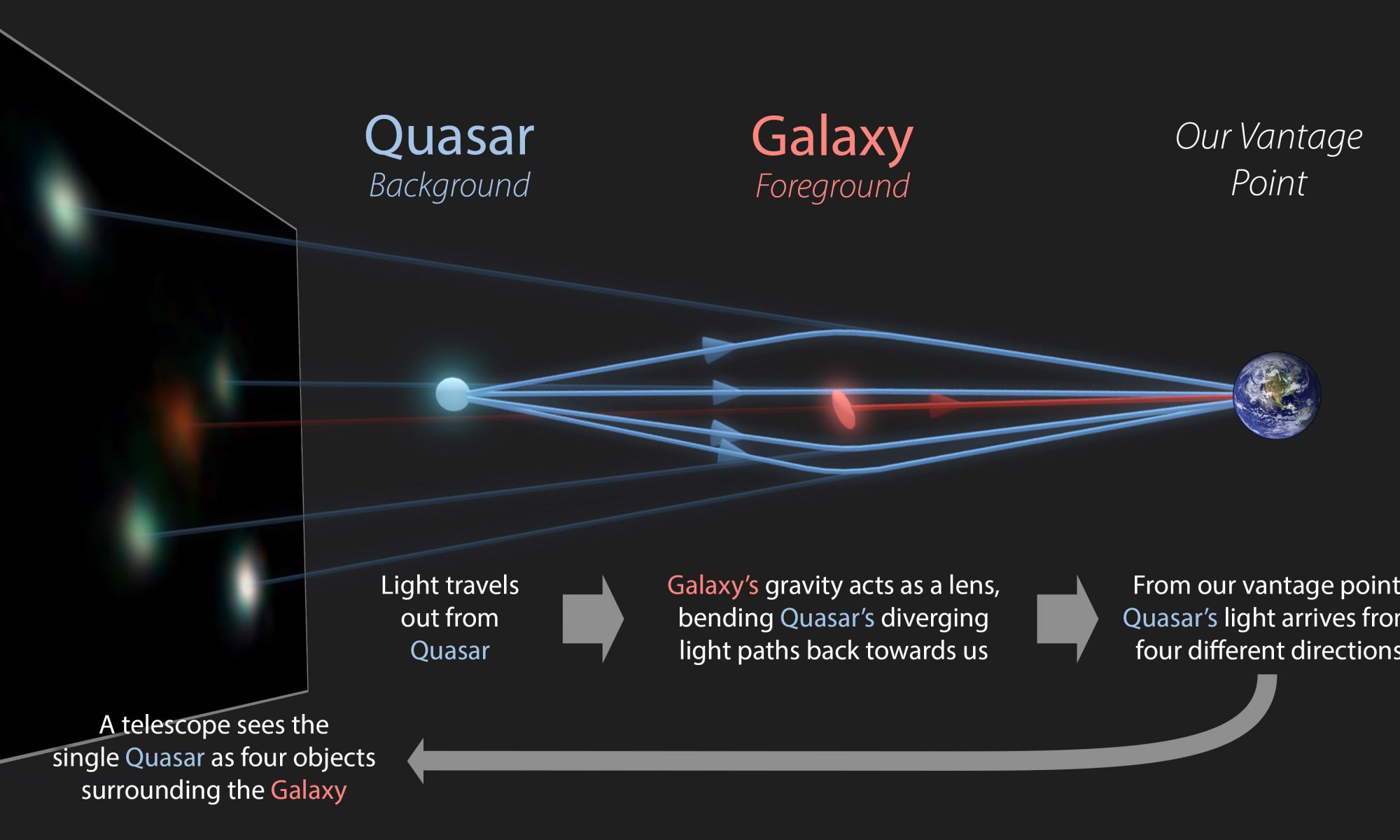In 1915, Einstein put the finishing touches on his Theory of General Relativity (GR), a revolutionary new hypothesis that described gravity as a geometric property of space and time. This theory remains the accepted description of gravitation in modern physics and predicts that massive objects (like galaxies and galaxy clusters) bend the very fabric of spacetime.
As result, massive objects (like galaxies and galaxy clusters) can act as a lens that will deflect and magnify light coming from more distant objects. This effect is known as “gravitational lensing,” and can result in all kinds of visual phenomena – not the least of which is known as an “Einstein Cross.” Using data from the ESA’s Gaia Observatory, a team of researchers announced the discovery of 12 new Einstein Crosses.
Continue reading “Gaia Finds 12 Examples of Einstein Crosses; Galaxies Being Gravitationally Lensed so we see Them Repeated 4 Times”
